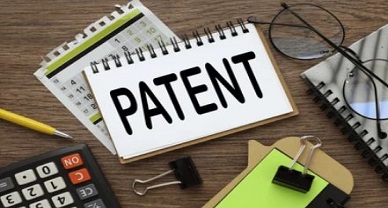Rise of Patents in India and Amended Rules Of 2024
INTRODUCTION
The Patent Act was enforced on 20th April, 1972. It is a statutory right which was granted by the government of India and in return the inventor of the patent have to completely disclose their creation. This allows the others to gain knowledge of the others invention and develop in the future. The patentee has exclusive rights over their invention for a particular period of time, that is 20 years in India. This represent that the patentee has the power to control the uses, makes, imports or sells of their invention. The infringement can be cause when someone exploits the invention without prior permission on these grounds. In this way by offering the inventors a possibility for profits from their creation motivate inventions while making sure that the knowledge in the end becomes public and encouraging more progress.
While, the patent provides a strong security, it is essential to be aware of its geographical limitations. A patent which is granted in the territory of India can only be discharged within the borders of India, meaning the Patent rights are territorial in nature. Which means that there is no “Worldwide Patent”. Nonetheless, if a patent application is filed in India, that leads to the protection of the patent internationally. The patentee can file an equivalent application in different countries usually within 12 months of filing the application in India to leverage the international treaties, some of them are like Patent Cooperation treaty common known as PCT or the Paris Convention[1]. This way it permits the inventors of the Patent to purposively create international patent portfolios. The inventors must acquire patents in every country in which the inventors wish to implement their rights for complete protection globally.
The following 4 points are the criteria of patentability[2] –
- Novelty – This criteria states that prior of the application for patent, the invention should be completely brand new and not earlier publicly known or disclosed throughout the world. This means that the invention cannot be disclosed in any prior publications, or be in use of public.
- Inventive Step – This criteria is also known as Non-obviousness which basically means that the invention should not be an obvious or evident modification of anything that was already in existence. The purpose of this criteria is that it must include an inventive step that wouldn’t be obvious to anyone with ordinary or limited knowledge in that particular filed.
- Industrial Applicability – This criteria states that the invention should be used in any industry or have the ability of being produced. This means that the invention must have a practical use that can be implemented or manufacture using easily available technologies.
- Exclusion under sections 3 & 4 of the Patent Act, 1970 – There are some inventions that are clearly removed from Patent protection in India. These inventions involves schemes, literary works, scientific discoveries, plants or animal(excluding micro-organisms), mathematical methods, diagnostic methods, and those which are contrary to morality and public order.
IMPROTANCE OF PATENT REGISTRSTION
The registration of the Patent is essential for the inventors and businesses alike, providing a multifaceted protection for an invention. The most important benefit lies instituting legal protection. A patent which is registered gives the exclusive right of control over the patent, how the invention is used, old, imported, or made for a specified period of 20 years[3]. This authorize the patent holder to proceed legal action against a person who infringes the said invention, and seek compensation from that person for damages. But the protection goes way beyond just from refraining the copycats. The registration unlatches the possibility to monetize the invention. The patentee can use the invention as an essential asset, either by licencing the use of the patent to others in return for the royalties or by selling it off to another person This way it can be a remarkable flow of revenue, mostly for the inventions with huge market value. Moreover, a patent registration makes the competitive advantage stronger. While, the competitors cannot duplicate the said invention for a specific period of time, the patentee have a precious time to set up their invention in the relevant market. This permit the patentee to grow brand recognition and loyalty of consumers before the other players would enter into the relevant market. Lastly, it doesn’t only protect the invention, a patent generate a valuable IP asset. The patent can be incorporated into the financial statements and utilized as a collateral for loans, same as the other assets. A patent can also create an edge while negotiating with the potential investors. To sum up, a registration of a patent is a crucial move that gives legal protection, monetize the invention, strengthen the competitive advantage and generate a valuable IP assets which all are the important parts of the success of inventions worldwide[4].
RISE OF PATENTS IN INDIA
According to the report published by “The Hindu” on 26th April, 2024[5], as evidenced by the rise in the filing of the patents, the innovations in India has seen a remarkable boom. As mentioned by Nasscom report, FY 2023 saw a staggering 83,000 patents have been filed, which represent a phenomenal growth rate of 24.6% annual which is the most in the last two decades. This data trend is projected to continue, with projections approximately over 1 Lakh patents to be given between the month of March 2023 to March 2024. This rise is associated by a notable shift in the one who is filing the patents. The domination of the foreign companies is declining, with the share of filing of the patents by the residents of India is almost doubled over the last 10 years. During FY 2023, more than 50% of all the application for patents arises from India, displaying a growing awareness and acknowledgement for IPR in India. Educational institutions are in front and an important player in this domestic invention rise.

This report also enlighten the most famous areas of patent. Healthcare is in the front, with diagnostics, report generation, testing and medical imaging entertaining the most of the applications. Followed by Retail or Ecommerce and Automatic or Software Development very closely. Also. AI appears to play as an important player with a rise in the patents associated with Natural Language Processing, Predictive Modelling and Image processing.[6] Moreover, Gen AI Cognitive computing and Medical data are all set to become crucial areas of AI patenting in the upcoming future.
Another report published by “The Times of India” on 16th July, 2024[7], according to that report IIT-Bombay has turned out to be in lead in the granting of patents, encountering a phenomenal of 160% rise in the year 2023-24. This leads to a record-breaking of 421 patents that was granted, a sharp contrast to 162 that was obtained in the last year. Surprisingly, only 131 patents were filed during this period. This means that the Indian patent offices are in efforts to clearing the backlogs of application.
The rise in the patent granted is mainly concentrated on the core engineering programmes. With 121 patents, electrical engineers are in the lead which is followed by mechanical engineering with 81 patents and then biosciences and bioengineering with 67 patents. According to IIT-Bombay’s research and development office[8], the patent office in India has remarkably increased their productivity by speeding up the disposal and the examination of the applications which was pending from a long time through increasing their strength in staff which led them to a fast process[9].
PATENTS (AMENDMENT) RULES, 2024
Some of the key takeaways from these amended rules –
The Patents (Amendment) Rules, 2024[10] was put in force from 15th March 2024. This Amendment introduced various changes to the Patent system in India. Rule by rule amendments are as follows –
Rule 12 (Sub-rule 2 & 3)[11] –
- The applicants must disclose the details of the equivalent patent application filed in foreign country within 3 months from obtaining the first examination specified in Form 3.
- To verify the information about the patent application filed in foreign, the controller can look to the database which is publicly available.
- The controller may, if he thinks fit, ask for the fresh or new disclosure statement provided in Form 3 within 2 months.
- Upon request, for the delays or for the extensions for filing the disclosure can be given for max of 3 months by using Form 4.
Rule 13 (Sub-rule 2A)[12] –
- The number of the original application they are derived from must specifically reference by the divisional applications.
- The Patent applicants can file additional divisional applications depending upon the original invention disclosed in the subsequent applications
Rule 24B (Sub-rule 1(i) & Clause (vi))[13] –
- The deadline has been reduced to 31 months from the filing or priority date, whichever is earlier, for submitting a Request for Examination (RFE).
- As specified in Section 11B, the existing applications filed prior to the new rules that came into effect are grandfathered in and carry to follow the old RFE timeframe.
Rule 29A (New Rule)[14] –
- Under Section 31, the process for utilizing the 12 month grace period is defined in this rule. Without jeopardizing the novelty of the invention due to previous disclosure, the Inventor can delay in filing the application of patent.
- To use the grace period, the patent applicants must submit form 31 accomplice by the specified fees as provided in the First Schedule (Rule 7).
Rule 55 (Amended)[15] –
- This amended rule explains the process for dealing with the oppositions against the applications for patent.
- If the opposition’s case is groundless, then they will be notified and the controller may issue an order denying the opponent within 1 month.
- If a hearing is demanded, then the controller will offer an opportunity to both the parties to be heard before issuing a final verdict within 1 month.
- Within 2 months of obtaining the opponent notice, the applicants who are facing the opponents can submit the supporting evidence and statements.
- To make the final decision on the opponent, the controller has only 1 month time period after taking into consideration all the submissions and evidences.
Rule 56 (Sub-rule 4)[16] –
- The notice of opponent will be reviewed by the Opposition Board with corresponding documents, then within 2 months of receiving the said documents the board will provide a report with specified reasons for each ground mentioned in the opponent.
Rule 70A (New Rule)[17] –
- For the patented inventions, a new process has been set in motion for the inventors to attain certificates.
- These said certificates is issued by the Controller on demand using Form 8A and on the payment of the prescribed fees. Duplicates can also be issued on condition if it is lost or damage.
Rule 80 (Sub-rule 3)[18] –
- This amended rule permit for the payment in advance of the renewal of patent fees for many years.
- If the payment is done through the electronic mode of renewal fees covering 4 years or more in advance, a 10% discount is offered.
Rule 110[19] –
- The composition for qualifying the examination has been revised for patent.
- The qualifying exam is consist of these 3 sections that follows –
- EXAM I – Patent Act, 1970, Design Act, 2000, Patent Rules, 2003, Designs Rule, 2001.
- EXAM II – Design Specifications and Drafting and Interpreting Patent.
- and, Viva.
Rule 131 (Sub-rule 2)[20] –
- Form 27 that is the regularity of submitting the working statements has been bring down from annually to once every 3 FY. This rule is only applied to the statements starting from the year subsequent patent grant.
- Upon request through Form 4, the deadline for statements filing continues to 6 months after the end of each 3 year period with a probable of 3 month extension.
Rule 137 (Sub-rule 1 & 2)[21] –
- The authority to amend the document s or to rectify the irregularities of the process lies with the Controller as long as it doesn’t injure and other person’s interest.
- This rule states the exceptions for which sub-rule 1 doesn’t apply. These include affairs that are related to time extensions, particular clauses in different rules, and some provisions affiliated to rules 55, 80, 130, and 131.
PATENT RENEWAL
Regarding the patent renewal, protecting the IP in India requires caution. Contrary to trademark, patents have a finite life’s duration and need annual renewal fees to preserve their viability. From the registration of patent date if the fee in not paid by the end of the 2nd year that will lead to its expiration, that means the invention will eventually fall within the ambit of public domain and anybody can exploit it. To abstain from this situation, renewal of the application within specific timeframe in addition with the prescribed fees is essential. While the particular of the process of the application is not provide here, it probably requires submitting a specific form and the relevant prescribed fees. The required price of the renewal fee is also not mentioned, but it’s essential to recall that these renewal fess are an annual requirement. It’s not the immediate end to miss the renewal deadline. There are still some hope for the restoration process. Through restoration application filing within 18 months of the expire date using Form 15[22], the patent holder or the patentee can certainly save their patent. Nevertheless, the restoration process might attract some additional fees, so being punctual during the constant renewal window is extremely recommended. Consulting the official Indian Patent Office website or a certified patent attorney or advocate is a good approach to guarantee an effortless renewal process and get the most up-to-date details on the payment and forms.
Author:–Devansh Aeron, in case of any queries please contact/write back to us at support@ipandlegalfilings.com or IP & Legal Filing.
[1] https://www.ipindia.gov.in/writereaddata/Portal/Images/pdf/Final_FREQUENTLY_ASKED_QUESTIONS_-PATENT.pdf
[2] https://www.globalpatentfiling.com/blog/Patentability-criteria-for-an-invention-in-India-
[3] https://www.legalraasta.com/blog/why-is-patent-registration-important/
[4] https://www.indiafilings.com/learn/what-is-patent-meaning-search-and-registration-procedure/
[5] https://www.thehindu.com/business/india-sees-83000-patents-being-filed-a-growth-of-246/article68111641.ece
[6] Ibid
[7] https://timesofindia.indiatimes.com/city/mumbai/iit-bombay-indian-patents-surge-by-160-to-reach-record-high-of-421/articleshow/111765935.cms
[8] Ibid
[9] https://indianexpress.com/article/education/iit-bombay-records-50-percent-jump-patent-grants-2021-22-jee-main-advanced-2023-8497664/
[10] https://ipindia.gov.in/rules-patents.htm
[11] Patent (Amendment) Rules, 2024 – Rule 12
[12] Patent (Amendment) Rules, 2024 – Rule 13
[13] Patent (Amendment) Rules, 2024 – Rule 24
[14] Patent (Amendment) Rules, 2024 – Rule 29
[15] Patent (Amendment) Rules, 2024 – Rule 55
[16] Patent (Amendment) Rules, 2024 – Rule 56
[17] Patent (Amendment) Rules, 2024 – Rule 70
[18] Patent (Amendment) Rules, 2024 – Rule 80
[19] Patent (Amendment) Rules, 2024 – Rule 110
[20] Patent (Amendment) Rules, 2024 – Rule 131
[21] Patent (Amendment) Rules, 2024 – Rule 137
[22] https://cleartax.in/s/expired-patent-renewal-process

